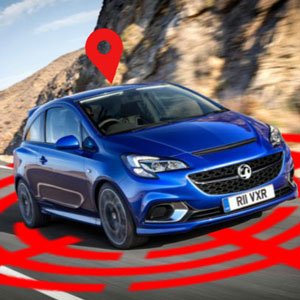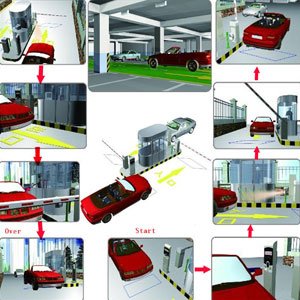Generally a tracking system is used to monitor or for the observing of persons or objects on the move and supplying a timely ordered sequence of respective location data to a model e.g. capable to serve for depicting the motion on a display capability. It is becoming an important tool for the businesses. The system enables the business to run smoothly and effectively. ‘Passive’ RFID tags broadcast their location but have limited transmission range (typically a few meters). Longer-range “smart tags” use ‘active’ RFID -where a radio transmitter is powered by a battery and can transmit up to 2000 meters (6,600 feet) in optimum conditions.

Baby Tagging
Tracking System solution provides comprehensive security to protect every monitored infant and child to prevent baby snatchings and/or pediatric patient wandering and instill peace of mind for families and staff. Each baby tag and strap are constructed of medical-grade materials to allow for proper cleaning and, unlike cloth-like straps, are not susceptible to moisture and fluid retention which can lead to bacteria growth, contamination and disruption in functionality.
Asset Tracking
Asset tracking refers to the method of tracking physical assets, either by scanning barcode labels attached to the assets or by using tags using GPS, BLE or RFID which broadcast their location. These technologies can also be used for indoor tracking of persons wearing a tag. Assets may also be tracked globally using devices which combine the GPS system and mobile phone and/or satellite phone technology. Such devices are known as GPS asset trackers and are different from other GPS tracking units in that they rely on an internal battery for power rather than being hard-wired to a vehicle’s battery. The frequency with which the position of the device must be known or available dictates the quality, size or type of GPS asset tracker required. However modern tracking technology has now seen advances in signal transmission that allows enough signal strength reception from the GPS satellite system which can then be reported via GPRS to terrestrial networks.


Car Tracking
Vehicle tracking or car tracking refers to monitoring the location of a truck, car or any moving vehicle using the GPS system. Widely deployed to keep track of truck fleets, cars, vehicle tracking ensures that the vehicles are being used properly and that they can be recovered in the event they are stolen. To detect GPS position information, a system must be able to receive signals from at least three satellites. In car navigation systems, the GPS antenna and GPS receiver serve to receive signals from these satellites.
Car Management System
The Vehicle Management or car management system is a system providing management functions which allows companies to remove or minimize the risks associated with vehicles owned by the companies. Vehicle Telematics, in a broad sense, is any integrated use of telecommunications with information and communications technology. It is the technology of sending, receiving and storing information relating to remote objects, such as vehicles, via telecommunication devices.

